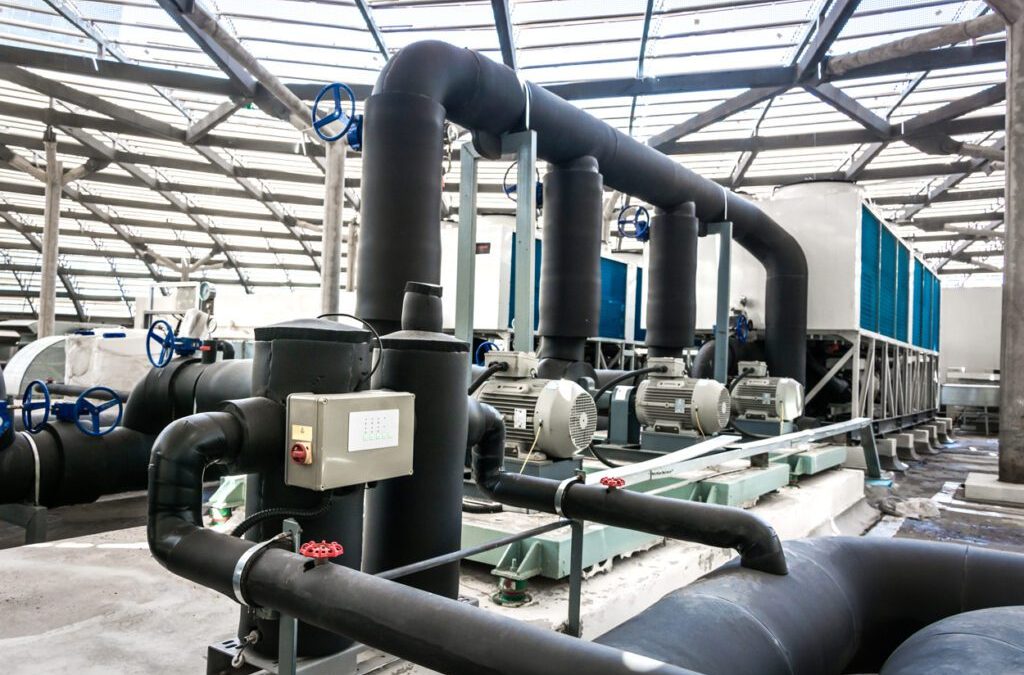ASHRAE Guidelines:
Comprehensive guidelines for HVAC systems, including refrigerant line insulation, are provided by the American Society of Heating, Refrigerating, and Air-Conditioning Engineers (ASHRAE). Based on pipe size and operating temperatures, ASHRAE Standard 90.1, which addresses energy efficiency in commercial buildings, establishes minimum thermal resistance (R-values) and insulation thickness.
This guarantees increased efficiency and a decrease in energy losses. Furthermore, ASHRAE Standard 15 places a strong emphasis on safety by suggesting insulation materials that are capable of withstanding high refrigerant temperatures and pressures. While addressing safety issues including condensation and fire dangers, these guidelines are essential for preserving system performance.
International Energy Conservation Code (IECC):
A popular model code that encourages energy efficiency in both residential and commercial buildings is the IECC. The IECC specifies R-values and thicknesses for refrigerant line insulation that are based on pipe diameters and temperature ranges.
Additionally, it places a strong emphasis on moisture control, requiring insulation to stop condensation that could harm building structures or encourage the spread of mould. By conducting inspections during construction, the code ensures that insulation complies with design specifications and maximizes energy savings.
ASTM Guidelines:
Insulation material performance and safety standards are established by the American Society for Testing and Materials (ASTM). For instance, ASTM C547 specifies the characteristics of mineral fibre insulation, guaranteeing that it satisfies standards for dimensional stability and thermal conductivity.
A related standard, ASTM C518, specifies how to measure insulating materials’ thermal transmission properties—the factors that ultimately determine their R-value. Regarding safety, ASTM E84 evaluates surface burning properties to make sure refrigerant line insulation materials adhere to fire safety regulations. These standards guarantee that insulation meets important safety requirements in addition to performing properly.
Local Energy Regulations and Building Codes:
In order to meet local construction and climatic requirements, regional building codes and energy restrictions frequently incorporate international norms. Examples include the United Kingdom’s Building Regulations Part L, which mandates that pipe insulation adhere to rigorous thermal performance standards and prioritizes energy conservation. California’s Title 24 in the US outlines insulation standards for refrigerant lines with an emphasis on moisture resistance and energy efficiency.
High-performance insulation materials are also required by the European Union’s Energy Performance of Buildings Directive (EPBD) in order to meet sustainability and energy-saving goals. Both new and retrofitted HVAC systems must comply with these requirements, which guarantee that systems are built to minimize energy use and environmental effects.
EPA’s Sustainable Practices Guidelines:
Refrigerant line insulation is one of the particular suggestions made by the U.S. Environmental Protection Agency (EPA) to encourage sustainability in HVAC systems.
To reduce energy losses, the standards emphasize energy efficiency and promote the use of insulating materials with high thermal resistance. In support of environmentally beneficial activities, the EPA also promotes materials low in volatile organic compounds (VOCs) and free of ozone-depleting pollutants. HVAC specialists may guarantee adherence to environmental rules and support worldwide sustainability initiatives by following the EPA’s recommendations.
NFPA Fire Safety Standards:
Important fire safety guidelines for HVAC insulation are provided by the National Fire Protection Association (NFPA). When installing HVAC systems, NFPA 90A requires the use of insulating materials with low ratings for smoke production and flame spread. This guarantees both infrastructure and occupant safety.
NFPA 274 assesses the fire performance of refrigerant line insulation in particular and provides recommendations for the safe selection of materials in commercial and industrial situations. Following these guidelines reduces the risk of fire, especially in high-stakes settings like data centres, hospitals, and tall structures.
LEED Certification Standards:
LEED, or Leadership in Energy and Environmental Design, is a widely accepted foundation for environmentally friendly structures. Because proper insulation of refrigerant lines lowers HVAC energy usage, it is essential for obtaining LEED energy efficiency credits.
Additionally, LEED promotes the use of low-impact, recyclable insulating materials. This guarantees long-term adherence to green building techniques in addition to advancing sustainability goals. Obtaining LEED certification can promote environmental responsibility and increase a building’s worth.
Manufacturer Specifications:
Manufacturers of HVAC insulation frequently offer comprehensive specifications related to their goods. These recommendations cover installation techniques, insulation thickness, and operating temperatures.
Following the manufacturer’s instructions guarantees that insulation materials will function at their best and stay covered under warranty. Product documentation must be consulted during installation and maintenance since noncompliance can jeopardize system dependability and efficiency.
Why Compliance Matters?
For a number of reasons, adherence to industry standards is essential. First of all, it minimizes energy losses and maximizes thermal resistance to guarantee energy efficiency. Building owners will save money as a direct result of this. Second, following safety regulations reduces the chance of material deterioration, fire, and condensation. Thirdly, by encouraging eco-friendly procedures and resources, compliance promotes sustainability.
The HVAC refrigerant line insulation industry standards offer a framework for attaining environmental sustainability, safety, and energy efficiency. Adherence to these standards, which range from local building ordinances and EPA recommendations to ASHRAE and ASTM guidelines, guarantees that insulation procedures and materials satisfy the requirements of contemporary systems.
HVAC specialists may provide dependable, effective systems that safeguard building occupants, maintain building structures, and help create a more environmentally friendly future by following these guidelines. For specialized solutions, speak with an HVAC specialist who is aware of the particular legal requirements and industry best practices for your project.
Frequently Asked Questions:
1. Why Is It Crucial To Insulate Air Conditioner Pipes?
Insulation ensures the system operates efficiently by reducing heat transmission and preventing condensation on AC pipes. It lowers energy waste, shields against moisture-related problems including mould growth, and stops pipe corrosion.
2. What Kind Of Insulation Is Ideal For Air Conditioning Pipes?
Rubber and polyethene are examples of closed-cell foam materials that are perfect for air conditioning pipes because of their durability, low heat conductivity, and moisture resistance. The surroundings, installation conditions, and temperature all influence the decision.


